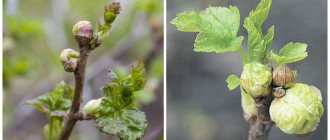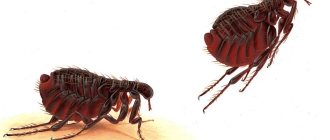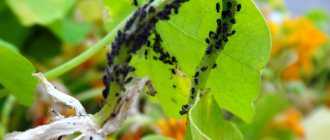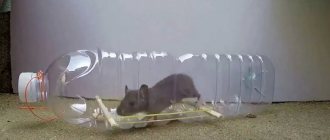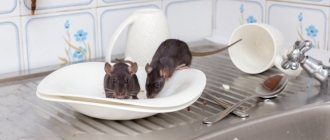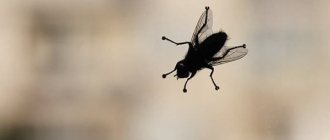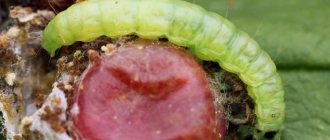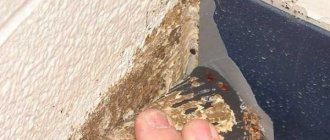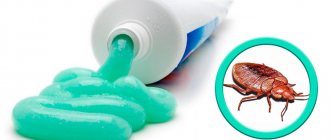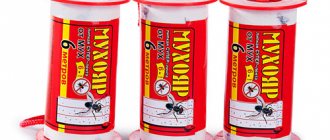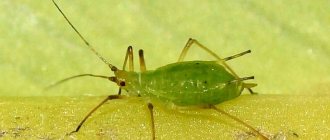Bud mite on currants
Currants are one of gardeners’ favorite berry crops. With care and attention, it gives a good harvest. But because of pests, you can lose tasty and healthy berries. One of them is the kidney mite (Cecidophyopsis ribis) . It often damages black currants , less often – red and white varieties .
Signs of appearance
You can detect the presence of a tick at different times of the year.
- In winter, the buds increase in size.
- In spring, the uneven development of the plant is noticeable. On shoots that are lagging in growth, the leaves are deformed and develop poorly. A mite-infested shrub has few flower stalks.
- In summer, due to curvature and underdevelopment of shoots, currants look sloppy. There are few ovaries; most fall off before reaching maturity. By the end of summer, damaged buds swell and begin to look very different from healthy ones.
- In autumn, increasing in size, the buds acquire a rounded shape.
Consequences
Cecidophyopsis ribis attacks currant bushes and leads to partial or complete loss of yield. This makes the process of growing crops unprofitable and degrades the quality of those berries that can be grown and harvested. Infecting just one bud, the mite multiplies very quickly and begins to expand the boundaries of its living space, gradually populating all the buds on the plant; round buds appear on black and red currants. Read how to properly grow salad onions here.
It is very difficult to cure currants infected with this pest. The main method of control is to remove diseased bushes from the garden and then burn them.
The bud mite destroys the crop almost completely. Treatment is difficult, so the focus should be on preventing infection.
Description of the pest
Having carefully examined a photo of a bud mite enlarged several dozen times, you will notice that the currant parasite is a tiny worm.
Its body is less than half a millimeter long and 0.04 mm wide. It is impossible to see such a crumb with the naked eye. In March, the female lays eggs. She can lay about a hundred pieces at a time.
As soon as the first foliage appears, the mites crawl out and crawl through the bush. Most individuals die, and those that survive occupy healthy buds. Constantly reproducing, they parasitize the berry garden for 5 generations.
Pest removal methods
It is very difficult to fight the kidney mite because it is located inside the kidney. The larvae can be destroyed using pesticides during their movement. However, this is prohibited, as beneficial insects begin to pollinate the plants. Elimination of the parasite should be carried out before flowering, as well as after harvesting the berries.
The following methods of control are distinguished:
- preventive;
- industrial;
- folk
Prevention
Simple rules help prevent the appearance of pests:
- You need to buy seedlings in specialized stores and licensed nurseries;
- do not take cuttings from infected plants;
- in autumn and spring, carry out sanitary pruning, after which treat clothes, tools, and burn cut branches;
- keep the area clean.
RELATED MATERIALS
Young strawberry leaves curl and do not unfold completely - this is the work of the strawberry...
4
4
Moniliosis, or monilial burn, is a dangerous fungal disease of cherries. Almost everyone suffers from moniliosis...
10
20
Modern plant protection products are not always available at the right time. Yes and...
1
Many fungal diseases of stone fruits are very difficult to combat. For example, cherry coccomycosis...
2
Perhaps black currants condescendingly forgive you for lack of proper care, almost making you happy...
2
6
The fruitfulness of currants is sometimes simply amazing. But not everyone likes to eat these sour berries fresh...
Treatment with industrial preparations
How to deal with a bud pest if the currant is heavily damaged or its planting takes up a lot of space. It is useless to use insecticides, since the tick is an animal creature.
Effective in this case will be drugs that contain colloidal sulfur, as well as insectoacaricides, acaricides - “Oberon”, “Kintiks”, “Nitrophen”, “Aktellik”.
Chemicals must be used in accordance with the manufacturer's instructions. The plants are treated twice with an interval of 10-12 days; the dosage for repeated treatment is reduced by half.
To prepare a remedy for kidney mites, take 10 g of colloidal sulfur powder and dilute it in a liter of water. Spray currants before flowering and immediately after it. The mass of the substance during repeated treatment is 5 g. Spraying the bushes with a lime-sulfur solution follows the same scheme.
Colloidal sulfur must be used carefully, as plants can get burned.
Experts recommend such biological products as “Actofit”, “Fitoverm”, “Bitoxibacillin”. However, they give a positive effect only in the warm season, and the awakening of currants begins even at low temperatures.
It is necessary to begin treatment for a kidney mite during its movement from diseased kidneys to healthy ones. This period coincides with the appearance of flower stalks and lasts approximately 4 weeks.
Optimal development conditions
The bud mite begins to “wake up” when the air temperature steadily warms up to +5 C without frost. Intense sap flow enhances bud growth, increasing the feeding area for mites.
At +12 C their migration to other bushes begins, so during the spring season the currant mite can infect the entire garden. In the autumn, in warm regions until November, the insect migrates from eaten away bushes that are unsuitable for food. Closer to frost, it finds a whole plant and hides in the buds for wintering.
Traditional methods
When cold weather does not allow the use of bioacaricidal preparations to combat the bud pest or the degree of infection of the bush is low, folk remedies will come to the rescue. Common ones:
- manually picking off infected buds;
- pouring boiling water over;
- spraying with garlic infusion;
- treatment of currant cuttings before planting with a decoction of black tea leaves (40 g per 20 liters of water);
- watering with mustard solution;
- irrigation with infusion of dandelion, tobacco, walnut, onion peel;
- planting perennial onions next to a berry bush.
What to do, how to get rid of a bud mite that has infected a plant by 40% or more. Experts advise cutting branches to the ground. Of the newly appeared ones, leave the strong ones, remove the weak ones. You can expect a harvest next year.
Danger and harm
These mites are considered very dangerous pests that are capable of destroying garden and berry crops in one season. One female gives 5 generations annually, two in the spring and three in the summer-autumn. This is a huge number of individuals, the number of which ranges from 15 to 40 thousand per year. They adapt very easily to new conditions and easily tolerate different climatic conditions.
Considering that they almost always have protection, since they live in buds, galls, and shoots, they are less exposed to external influences. In addition, such protection significantly complicates the procedure for combating them. If you do not take effective measures to combat them, then in one season they can destroy infected bushes.
Protect the environment
The fight against bud mites causes big problems for gardeners. However, proper care of currants and implementation of preventive measures can significantly reduce the possibility of crop loss. Most measures can protect crops from mites, harmful insects, and various diseases.
Do not forget that nature itself has invented a way to get rid of pests.
In the surrounding world, each parasite has its own natural enemies, entomophages, which successfully reduce its number. It is necessary to be attentive to small workers in gardens and vegetable gardens and to use chemicals carefully.
Insects that help fight mites are ladybirds, lacewings, carnivorous bugs, parasites (chalcids), hoverflies, encarsia wasps, phytoseiulus (predatory mites), etc.
Measures to combat currant mite
Not a single insectoacaricidal drug affects insect eggs. Therefore, treatments with poisons will be effective only during the period of hatching of the larvae.
The following are used as control measures:
- Chemicals.
- Folk, in the form of solutions.
- Biological products.
- Agrotechnical method.
As a biological control method, predator insects are used that destroy the currant mite.
Important! Mass migration of the parasite to new habitats occurs at the very peak of the growing season, when currants bloom or berries are set. At this time, intensive pollination of flowers by bumblebees, wasps, and bees occurs. The use of pesticides is prohibited.
